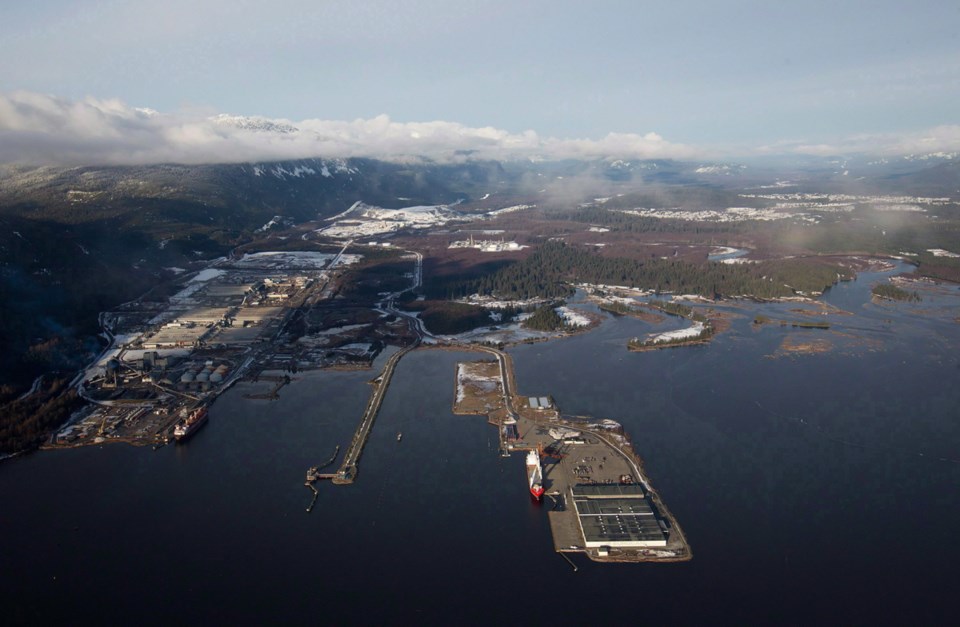 Way up the coast in Hartley Bay, the Gitga’at band plans to string a crocheted “Chain of Hope” 3.5 kilometres across Douglas Channel on Friday.
Way up the coast in Hartley Bay, the Gitga’at band plans to string a crocheted “Chain of Hope” 3.5 kilometres across Douglas Channel on Friday.
The women of the tiny, isolated village have been working on the chain since early April. Made of multicoloured yarn and decorated with baby photos and other personal mementoes, it’s meant to serve as a symbolic blockade of the oil tankers that would ply the channel if the Northern Gateway pipeline were built.
Other barriers, as Stephen Harper and the oil industry are about to find out, will be harder to breach.
The federal cabinet reveals today whether it is approving or rejecting the $7-billion Alberta-to-Kitimat pipeline. The announcement will come after the markets close. Few expect rejection.
The real mystery is why Harper has taken so long to make the decision. Maybe he has been trying to figure out how to extract himself from the tarpit into which he strode with such confidence. Maybe he’ll even delay a decision until after the 2015 federal election, though that’s unlikely.
The prime minister is in a pickle. Reject Northern Gateway and he alienates his core supporters. Approve it and he triggers never-ending lawsuits and, possibly, civil disobedience — not to mention a possible B.C. backlash at the polls.
Five separate lawsuits — three from individual First Nations, and two on behalf of a variety of environmental groups — have already been filed against the Joint Review Panel report on which cabinet’s decision is being based. Those lawsuits have been stuck on the shelf pending cabinet’s announcement, as it’s expected that decision will be challenged, too. Once those challenges have been filed, as must be done within 15 days of the cabinet decision, the expectation is that all the lawsuits will be rolled into one big lawyerfest by the federal court of appeal.
Other aboriginal and environmental groups are lined up. “We will do whatever it takes to stop oil tanker traffic in our waters,” declared the Heiltsuk First Nation in a June 7 statement.
Then there’s the provincial government to consider. With Harper’s pipeline approval assumed to be a given, all eyes are on Premier Christy Clark and her political tightrope act. The feds might have the bulk of the regulatory power, but Clark has promised to fight Northern Gateway if the project doesn’t meet five conditions.
Should Clark waver from that stance, the Dogwood Initiative enviro group is poised to launch a voter initiative similar to the anti-HST revolt. A recent Nanos poll found two-thirds of British Columbians want the pipeline rejected or delayed. In April, Kitimat residents voted against Northern Gateway in a non-binding plebiscite.
From Harper’s view — and the oil industry’s — the wisdom of Northern Gateway is a no-brainer: with the Americans balking at the proposal to build the Keystone XL pipeline through the U.S., Enbridge’s plan represents the way to get Alberta oil to landlocked markets. If it occurred to them that British Columbians — particularly Aboriginal ones, who carry legal clout than cannot be ignored — might have a different perspective, that perspective was quickly dismissed, at least until it was too late.
This has become the pattern for Harper, whose belief in his own voice to the exclusion of all others has proven his Achilles heel (just ask the Supreme Court). Even British Columbians who support the pipeline bridle at the notion of the federal government ramming a decision — any decision — down their throats.
Hubris can prove fatal to politicians. In the 1970s, B.C.’s New Democrat reformers raced ahead of public consensus and straight into the jaws of defeat. Blindsiding the public with the HST cost Gordon Campbell his job in 2010. In 1980, Pierre Trudeau’s National Energy Program alienated the western provinces, particularly Alberta; the Liberals suffered their worst-ever defeat in the next election, losing all but two seats in the West.
Harper can’t ignore that. As much as he might believe in Northern Gateway, he has to know he can’t swing it open on his own.



